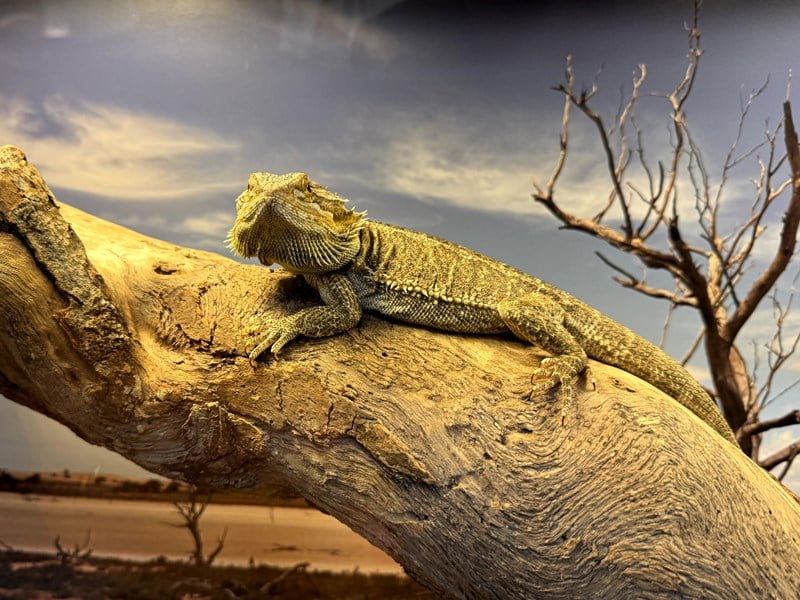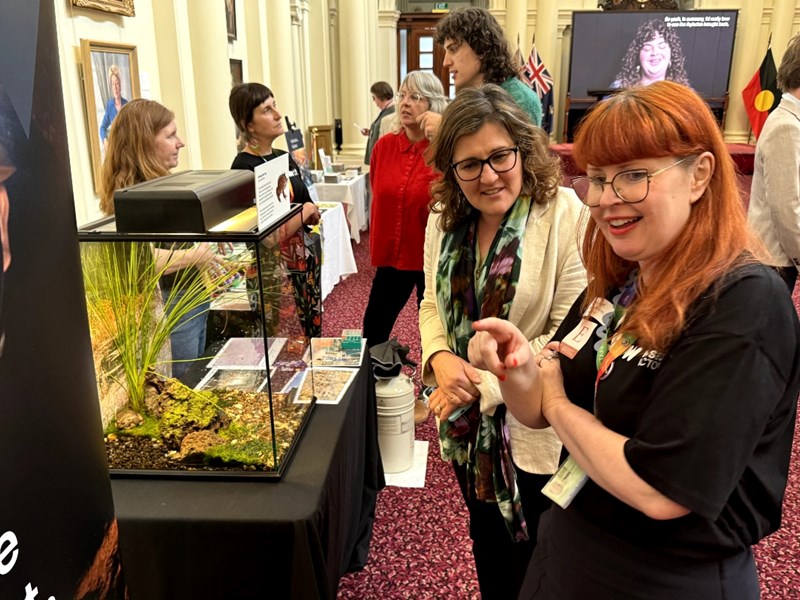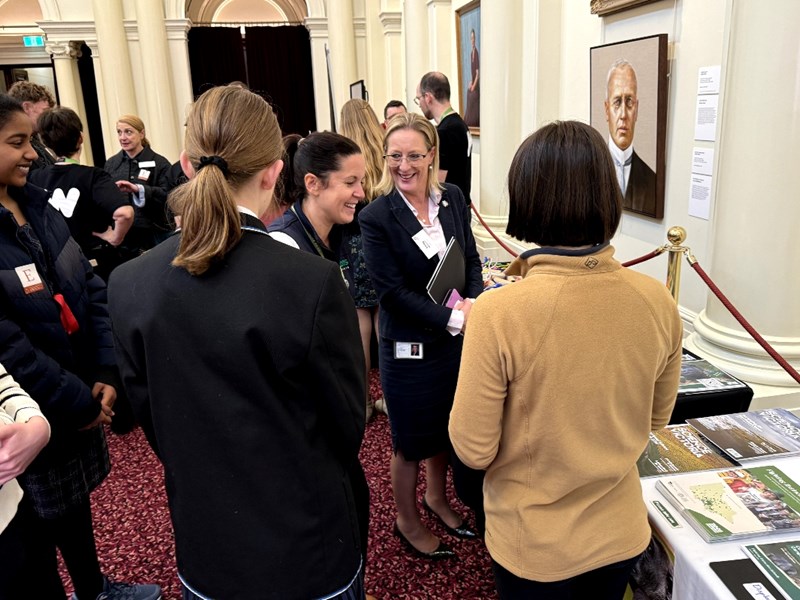- Home /
- News /
- Environment
Rare, threatened and just plain weird: Science Week at Parliament
16 August 2024

Growling grass frogs, a bearded dragon and even a ‘chickenosaurus’ made their debuts in Parliament this week.
The trio made their appearances as part of a sustainable species exhibition in celebration of National Science Week.
The exhibition was a collaboration between Zoos Victoria, Melbourne Museum, Science Gallery Melbourne and Parliament of Victoria. It explored what we can learn from the past, do in our present, and think about in the future to ensure species not just survive but thrive.
Cheryl Laks, Education Innovation Leader from Zoos Victoria, says protecting our natural habitat isn’t just for scientists, but can include the whole community.
‘We’re highlighting our ‘Safe Cat, Safe Wildlife’ campaign. We know that when cats are out roaming not only can things happen to them via injuries and fights and car accidents and so on, but also there is a deep impact on wildlife as well,’ she said.
Recent research has found that roaming pet cats kill 546 million animals a year in Australia, 323 million of which are native animals. The ‘Safe Cat, Safe Wildlife’ campaign supports cat owners to keep their pets indoors.
‘This campaign is really influential around protecting species, the Leadbeater's Possum especially,’ she said.
‘So it's a campaign around sharing with the community, who want to not only keep their cats safe, but also help Victoria's wildlife at the same.’

Dr Nurin Veis, Director of Museums Victoria Research Institute, says the museum’s work spans everything from understanding the fossil record to helping protect and preserve the contemporary realm, including documenting newly identified species and monitoring the current state of biodiversity in southeastern Australia.
‘We document and record them and we know precisely geographically where all the species are located, including insects, because we need our biodiversity to be thriving, rich and alive because those environments are what we rely on for our food, for our air, for our clean water,’ she said.
‘It really brings to life what an amazing, special place this is on the planet.’

Jesse Chambers, Deputy Head Learning Programs with Science Gallery Melbourne, said their exhibition was about imagining the possibilities, and the risks, associated with science.
Science Gallery Melbourne has taken its recent ‘Not Natural’ exhibition and turned it into a student workshop.
The workshop takes the idea of the ‘chickenosaurus’, a theoretical experiment to reactivate ancient dinosaur genes in modern birds, and allows students to imagine combining two animals into a something new, a chimera.
‘Before they do that, we have conversations with them about the implications of bringing it back. So just because we can do all of this awesome stuff with science, should we?,’ he said.
‘They think about what impact would it have on the environment if we were to bring in a new species into a country like Australia, which has such a delicate ecosystem. They think about what would be the impact on people and also on the economy if you were to bring back a creature that hasn't been evolved to live in an environment like Australia.’
The exhibition, he says, is a perfect fit for Parliament, because it highlights the link between civics and citizenship and science.
‘They go hand in hand with one another and, at Science Gallery, all of our exhibitions are interdisciplinary. All of our exhibitions combined multiple different disciplines because that's how the world works.’